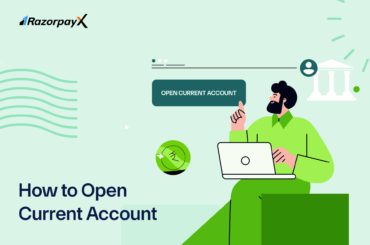Table of Contents
Definition of Enterprise Resource Planning (ERP)
Enterprise Resource Planning (ERP) is a type of software that businesses use to manage core business processes like finance, HR, manufacturing, supply chain, etc.
They integrate all the processes needed to run a business in a single system, allowing for free-flowing communication between departments and functions.
Traditionally, ERP was done through a combination of disparate systems and manual processes. Due to disconnected systems and manual processes, managers lacked a clear view of key performance indicators (KPIs) across departments, hindering informed decision-making.
Today, enterprise resource planning is done entirely digitally. Modern ERPs are all-encompassing software with various modules for each business function. In this blog, we discuss ERP as a software.
Why are ERPs Important?
ERPs are important for the smooth functioning of the business. By integrating data and workflows across departments, ERPs ensure transparency and visibility, leading to better decision-making and improved efficiency across the business.
Here are the key benefits of an ERP:
-
Improved Efficiency and Productivity: ERPs automate many manual tasks, freeing up employees to focus on more strategic work. This can lead to significant gains in efficiency and productivity across the organization.
-
Enhanced Data Accuracy and Integrity: ERPs provide a single source of truth for all your business data. This eliminates the risk of errors and inconsistencies that can occur when data is stored in multiple systems.
-
Improved Collaboration: ERPs break down information silos between departments, making it easier for employees to collaborate and share information. This can lead to faster decision-making and improved problem-solving.
-
Reduced Costs: ERPs can help businesses save money in a number of ways, such as by reducing the need for manual data entry, improving inventory management, and streamlining supply chain processes.
-
Better Customer Service: ERPs can help businesses provide better customer service by giving them a 360-degree view of their customers. This allows businesses to anticipate customer needs and respond to them more quickly.
-
Improved Decision-Making: ERPs provide businesses with real-time data and insights that they can use to make better decisions. This can lead to improved profitability, growth, and competitive advantage.
-
Increased Scalability: ERPs are designed to scale with your business. This means that you can add new users and functionality as your business grows.
-
Enhanced Regulatory Compliance: ERPs can help businesses comply with industry regulations by providing them with the tools they need to track and manage data.
How Does Enterprise Resource Planning (ERP) Work?
An ERP system consists of several integrated modules that a common dataset and serve the purposes of the various departments in a company.
Companies can pick modules and customise their ERP software according to their unique needs. ERPs are generally purchased using a licensing (on-premise) or cloud subscription model, depending on budget, infrastructure and other requirements.
Some common ERP modules include:
- Finance modules which handle essential functions like general ledger, accounts payables and receivables, budgeting and financial reporting. The finance module is the most important and commonly used module. Solutions like RazorpayX Business Banking+ offer all the functionalities of this core finance module.
- Sales modules help manage all interactions with customers, from lead generation to sales quotes. It provides valuable, data-driven insights into customer behaviour, sales performance and more.
- HRM, or human resources management modules help the HR department manage payroll, benefits, recruitment and performance tracking. Companies can choose to customize their HRM modules with features like time and attendance tracking, leave management and more.
- The procurement module helps businesses procure goods and services and manage inventory, warehousing and logistics. With customizable features like budgeting, approval workflows and 3-way matching, procurement ERPs help businesses cut down on overbuying and improves vendor relationships.
- Data analytics and business intelligence modules help businesses gain insights from ERP data to make better decisions.
Read more: HR Automation
Types of Enterprise Resource Planning Software
Businesses can purchase their ERP solutions in two ways:
Cloud ERP
A cloud ERP is hosted externally and is delivered over the internet instead of being installed on the company’s own servers. This eliminates the need for local installations, freeing up the company’s IT team to focus on core business functions.
Most cloud ERPs are subscription-based, charging an annual or monthly fee for usage. Cloud ERPs offer benefits like easy customization, remote usage, automatic updates and more.
However, cloud ERPs also come with concerns like data security, the need for a reliable internet connection.
Cloud ERP is ideal for businesses of all sizes, especially fast-growing ones and those with remote workforces. It is a good fit for businesses that prioritize scalability, collaboration, and innovation.
On-premise ERP
An on-prem ERP is installed locally in a company’s internal servers or data centers. Maintenance and implementation is the responsibility of the company’s internal IT team.
This gives the company full control over the ERP and its functionalities. There is also minimal risk of data security issues and internet breakage.
However, on-premise ERPs have major drawbacks, like the high upfront costs for the license and the hardware of the IT staff to manage the system. There are also limitations to accessibility, since on-premise software can mostly only be accessed from within the company network.
On-premise ERP can be a good choice for businesses that require tight control over their data and systems, have significant customization needs, or have concerns about cloud security. However, the high upfront costs, IT resource requirements, and scalability limitations make it less suitable for smaller businesses or those needing a more agile solution.
Hybrid ERP
Hybrid ERP combines the strengths of both on-premise and cloud-based ERP systems, offering a flexible solution for businesses with diverse needs.
It allows companies to keep mission-critical data and existing on-premise systems they’re comfortable with, while leveraging the scalability, affordability, and ease of use of cloud-based solutions for specific departments or functionalities.
This hybrid approach can be ideal for companies transitioning to the cloud, those with regulatory compliance requirements, or businesses with a mix of mature and evolving processes.
Evolution of ERPs
ERPs have come a long way from their humble beginnings in the 1960s. Here’s a whirlwind tour of their evolution:
-
1960s-1970s: The MRP Era: The story starts with Material Requirements Planning (MRP) systems. These early birds tackled inventory management in manufacturing, helping companies track raw materials and production needs.
-
1980s-1990s: MRP II Takes Over: Manufacturing Resource Planning (MRP II) built upon MRP, expanding its scope beyond inventory to encompass scheduling and production processes, providing a more holistic view of manufacturing operations.
-
1990s: The Dawn of True ERPs: The 1990s witnessed the birth of ERP systems as we know them today. These integrated various departments like accounting, finance, and sales into a single platform, fostering collaboration and streamlining information flow across the entire business.
-
2000s-Present: The Cloud Revolution: The 2000s ushered in the era of Cloud ERP. This game-changer shifted ERP systems from on-premise installations to the cloud, offering increased accessibility, scalability, and reduced IT burden for businesses.
-
The Future: Mobility and AI: As we look ahead, the future of ERPs is likely to involve even greater mobility, allowing access from any device. Additionally, Artificial Intelligence (AI) is expected to play a bigger role, automating tasks, generating insights, and optimizing decision-making within organizations.
Drawbacks of ERPs
One of the biggest drawbacks of an enterprise resource planning system is the cost. ERPs can be expensive, including licensing, maintenance and implementation fees. They can also be complex – requiring special training for employees across departments.
With solutions like RazorpayX, you get a centralized dashboard with a current account module, payouts, vendor management, payroll, and so much more. RazorpayX Business Banking+ is flexible and cost-effective, with all the core features of an ERP.
FAQs
What are the types of ERP?
There are three types of ERP: on-premise, cloud, and hybrid. On-premise is hosted on the company's internal servers, while cloud is hosted on external servers. Hybrid ERPs are a combination of on-premise and cloud systems.
What is the difference between ERP and CRM?
ERP software focuses on a company's internal operations, streamlining back-office functions like finance, inventory, and HR. CRM software, on the other hand, is all about managing customer interactions and relationships. It supports sales, marketing, and customer service teams. While they serve different purposes, both ERPs and CRMs can improve efficiency and provide valuable data for better decision-making.
What are the different modules in an ERP?
ERPs have core modules like finance, accounting, and inventory. Companies can then add on modules specific to their needs, such as CRM for customer relations or production modules for manufacturers.





